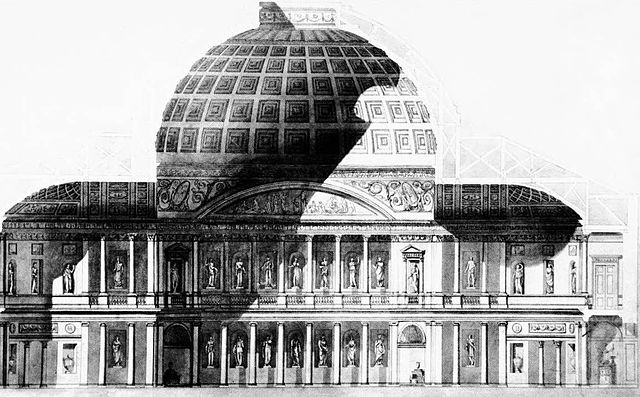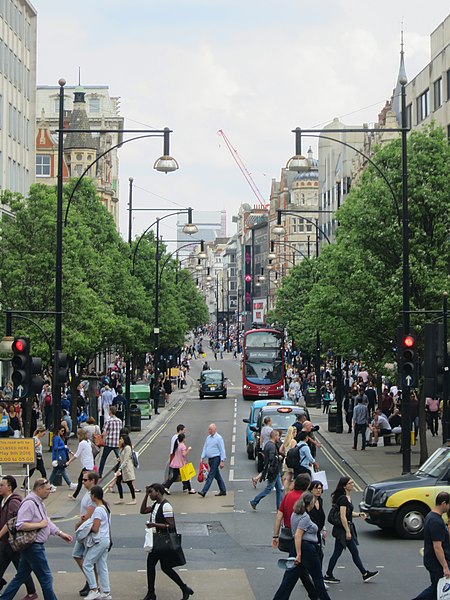The Pantheon was a place of public entertainment on the south side of Oxford Street, London, England. It was designed by James Wyatt and opened in 1772. The main rotunda was one of the largest rooms built in England up to that time and had a central dome somewhat reminiscent of the celebrated Pantheon in Rome. It was built as a set of winter assembly rooms and later briefly converted into a theatre. Before being demolished in 1937, it was a bazaar and a wine merchant's show room for over a hundred years. Marks and Spencer's "Oxford Street Pantheon" branch, at 173 Oxford Street now occupies the site.
The Pantheon in Oxford Street, London.
The Oxford Street facade.
A cross section of the rotunda, showing the dome and the colonnades.
Plan.
Oxford Street is a major road in the City of Westminster in the West End of London, running from Tottenham Court Road to Marble Arch via Oxford Circus. It marks the notional boundary between the areas of Fitzrovia and Marylebone to the north, with Soho and Mayfair to its immediate south. It is Europe's busiest shopping street, with around half a million daily visitors, and as of 2012 had approximately 300 shops. It is designated as part of the A40, a major road between London and Fishguard, though it is not signed as such, and traffic is regularly restricted to buses and taxis.
View east along Oxford Street in May 2016
Oxford Street in 1875 (looking towards the present-day site of Selfridges on the right).
Marshall & Snelgrove's department store building of 1870.
Former Waring & Gillow store of 1906 ('United Kingdom House').








